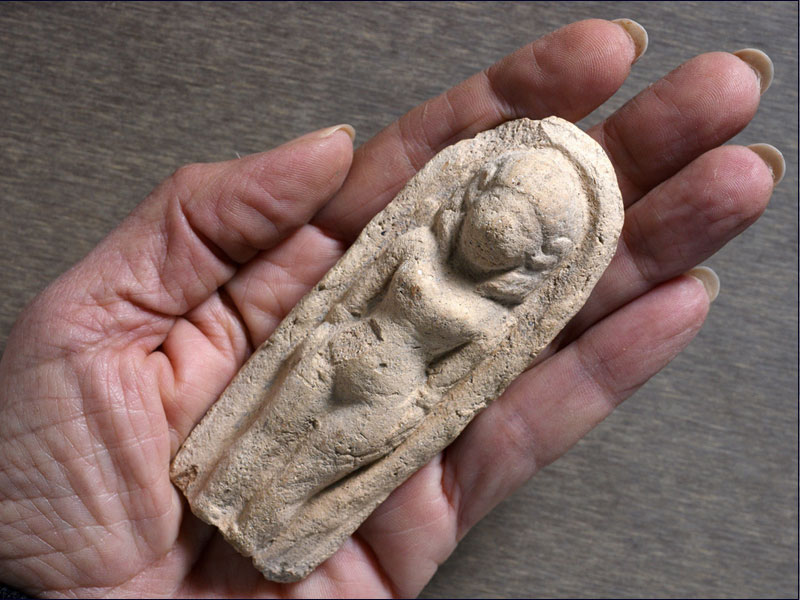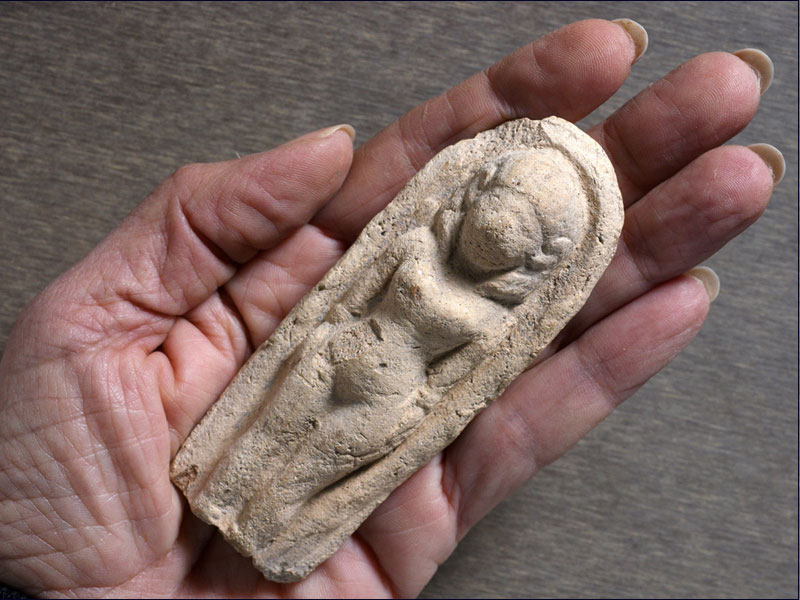Young children are known for having a lot of energy and being constantly on the move. One particular child in Israel was running around one day when he came across something magnificent – he kicked up a 3,000-year-old ancient artifact.
Ori Greenhunt found the figurine poking out of the ground while he was climbing on a dirt pile with his friends. They were near the Tel Rehov archaeological site. Knowing what significance the area had and what the figurine could be worth, the boy carefully took the figurine home.
Archaeologists believe that the artifact dates back around 3,400 years, and it may be what is known as the curvaceous fertility goddess Astarte.
Ori had said that he came across a stone near the dirt pile and soon noticed the stone had a face. His mother, Moriya Greenhut, said the boy came home with a large grin on his face and showed her the figurine he had found. She also said that she told him that the figurine belongs to the state since it is an ancient artifact.
The family lives in a communal settlement known as Tel Te’omin in the Beit She’an Valley. They gave the figurine to the Israel Antiquities Authority. Archaeologists who examined the figurine determined that the figure of the woman was made from pressing clay into a mold.

A professor at the Hebrew University, Amihai Mazar, said the figurine could have represented the ordinary women in the village or it could, in fact, represent the fertility goddess Astarte. Mazar explained that some researchers believe that the figure depicts a real “flesh and blood” woman while others believe she is Astarte. The researchers who believe she’s meant to depict Astarte have read documents from the Canaanite sources and the Bible. He added that it is quite likely that the term trafim as mentioned in the Bible refers to the figurines like the one found.
Astarte was worshiped from the Bronze Age through classic antiquity and was connected with fertility, sexuality, and war. Her symbols were the lion, horse, sphinx, dove, and a star within a circle which indicated Venus, the planet. She was depicted naked a majority of the time.
Mazar also explained that it is evident that the figurine had belonged to one of the residents of the city of Rehov, a city ruled by the central government of the Egyptian pharaohs. The figurine was typical in the Canaanite culture during the 15th through to the 13th centuries BC.
Because Ori had turned in the figurine he was awarded a certificate of appreciation for his good citizenship by the Israel Antiquities Authority at his school. His teacher, Esther Ledell, said that it was an amazing occasion to see Ori find something so significant.
Ledell added that the archaeologists who presented the certificate at the school had entered the classroom during a Torah lesson. That lesson happened to be about Rahel, who had stolen her father’s household gods. She told the classroom that those household gods were the statues that were used for idol worship; then she realized that she actually had one of those ancient idols in the classroom.
Here is a little history of Astarte:
Astarte, or Ashtoreth in Greek, is a Hellenized form of the Middle Eastern goddess Ishtar. She was mostly worshiped during the Bronze Age (as stated above). The name is most associated with her worship in the ancient Levant among the Canaanites and Phoenicians. She became celebrated in Europe following the importation of Levantine cults. Her name is also applied to cults in Mesopotamian cultures such as Assyria and Babylonia.
Astarte was worshiped in Syria and Canaan at the beginning of the first millennium BC and was actually first mentioned in the Ugarit texts. It is believed that she came from the same Semitic origins as the Mesopotamian goddess Ishtar. One particular document specifically puts her with Ishtar.
Her worship eventually spread to Cyprus, where it is believed she merged with an ancient Cypriot goddess. The merged goddess may have been adopted into the Greek Pantheon in Mycenaean and Dark Age times to eventually form into Aphrodite.
